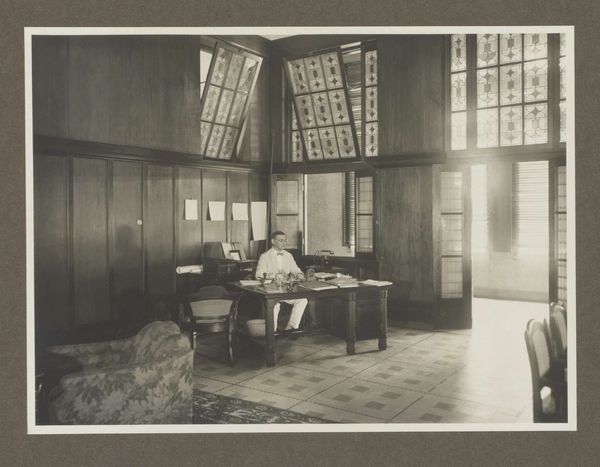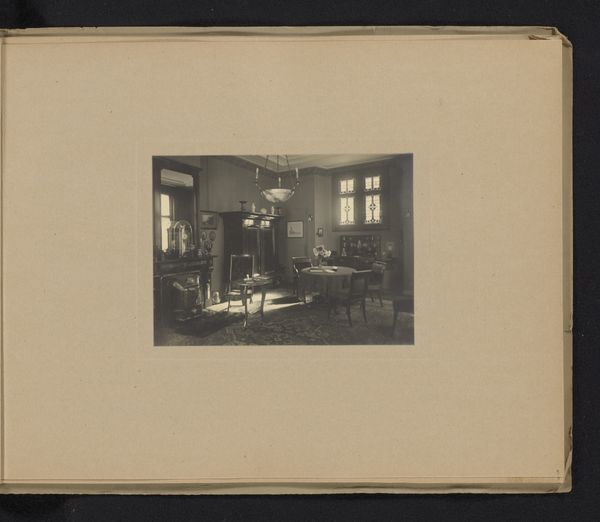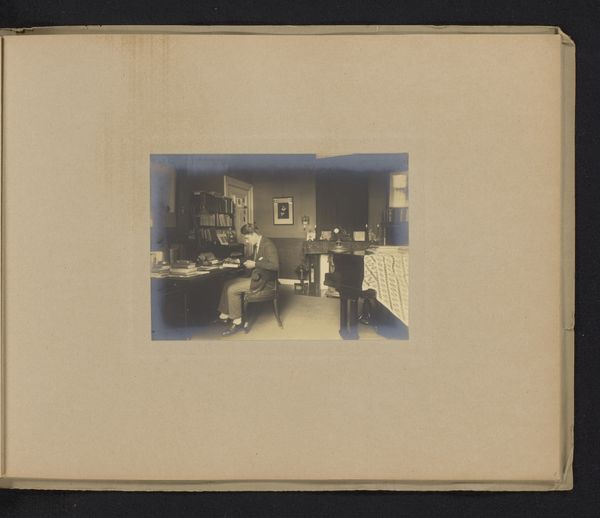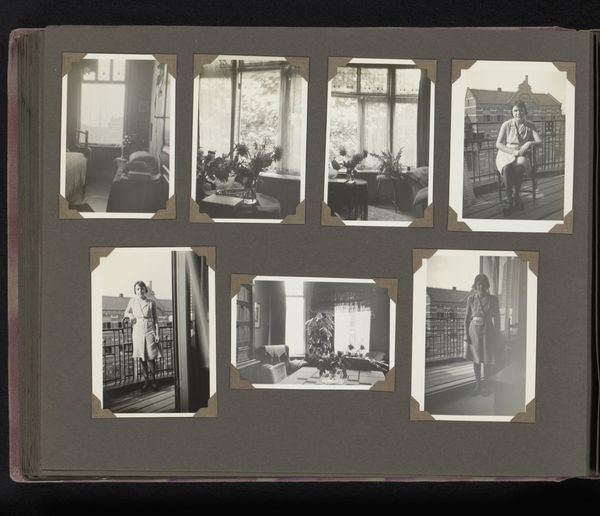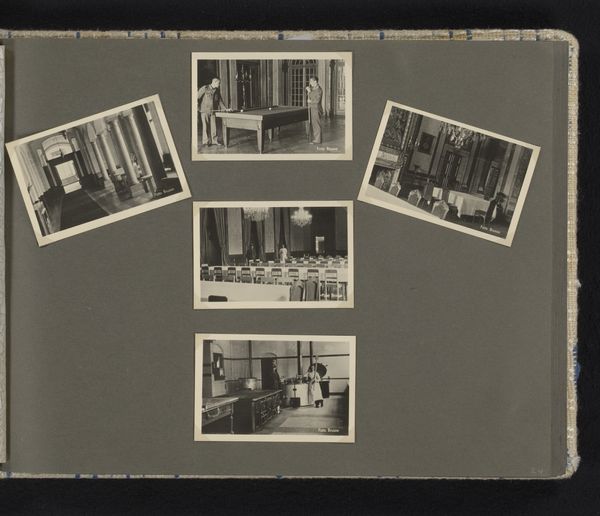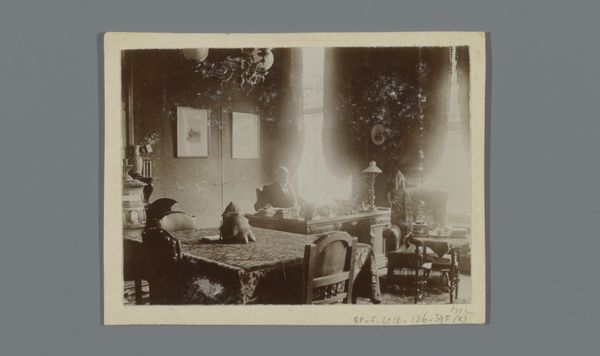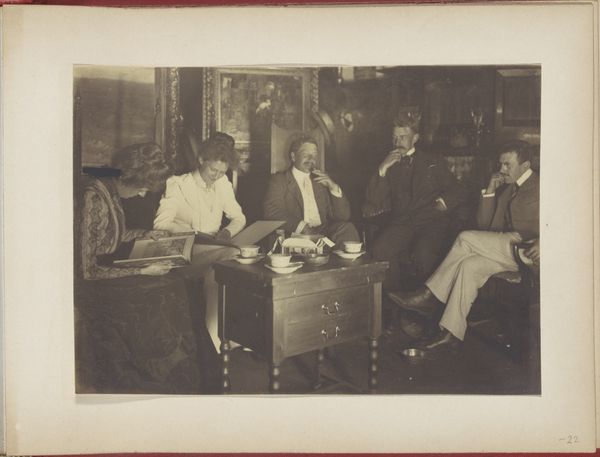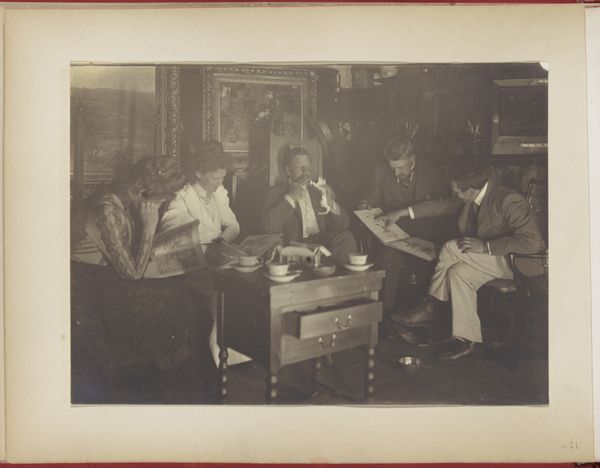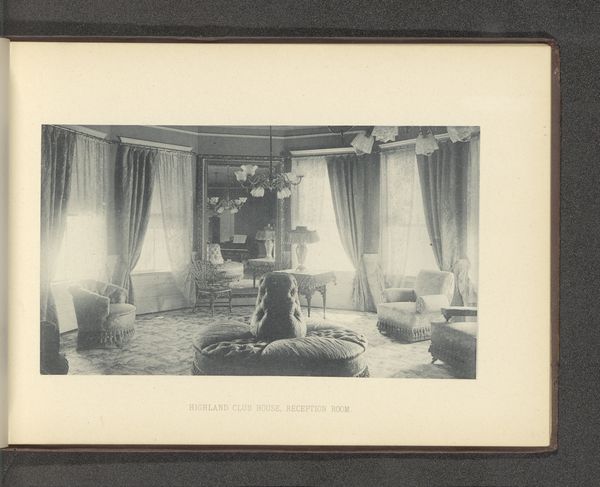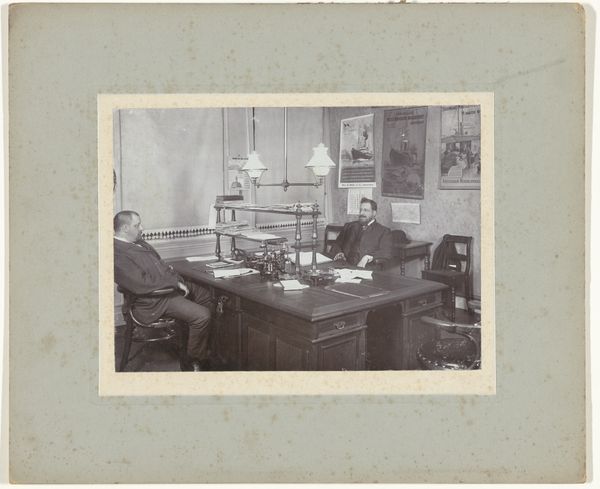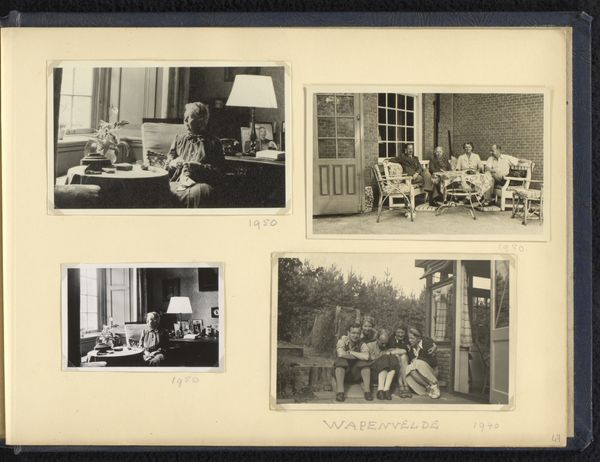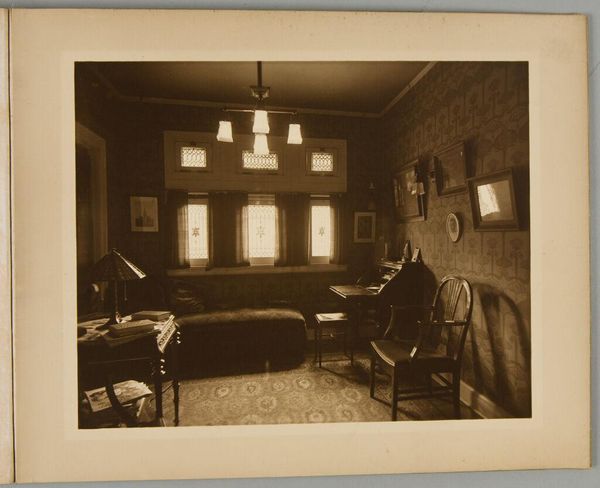
photography
#
portrait
#
photography
#
genre-painting
#
realism
Dimensions: height 173 mm, width 232 mm, height 211 mm, width 285 mm
Copyright: Rijks Museum: Open Domain
Editor: Here we have a photograph, likely from 1936, titled 'Een scène uit het toneelstuk 'Wat Jonas overkwam' – so, 'A scene from the play 'What happened to Jonas''– attributed to Fotobureau Stevens. The scene depicts a group of people in what appears to be a rather well-to-do living room. It feels posed, very staged, what strikes me the most is how everyone is crammed into the frame; very unnaturalistic! What do you see in it? Curator: Beyond the formal staging, let’s consider the materiality. It’s a photograph, a mass-reproducible image, capturing a scene from a play. That play, performed by actors and staged with sets, is also a constructed reality. This image thus reflects the mediation inherent in all representational forms. What labor went into the construction of this setting? Editor: I see what you mean. The labor is both literal, in building the set and posing the actors, and symbolic, in constructing a scene of bourgeois domesticity. So the set materials tell the story? Curator: Exactly! Consider the fabrics, the furniture, even the drinks on the table. These aren’t just props. They are material signifiers of class and social standing. The very act of documenting this fabricated moment highlights the production and consumption intrinsic to both theatre and photography. Are these real people? What kind of labour produces such commodities for this privileged social strata? Editor: I hadn't thought of the "real" in that way. So it becomes about the cultural manufacturing process? Curator: Precisely. How is the theater production disseminated to reach wider audiences, through material photographs available for sale and distribution? And the choice to create the scene, is about the audience they desire to attract... Editor: It changes everything to consider it from a labor and materials point of view rather than aesthetics! Curator: Indeed. It's about exposing the making visible.
Comments
No comments
Be the first to comment and join the conversation on the ultimate creative platform.
